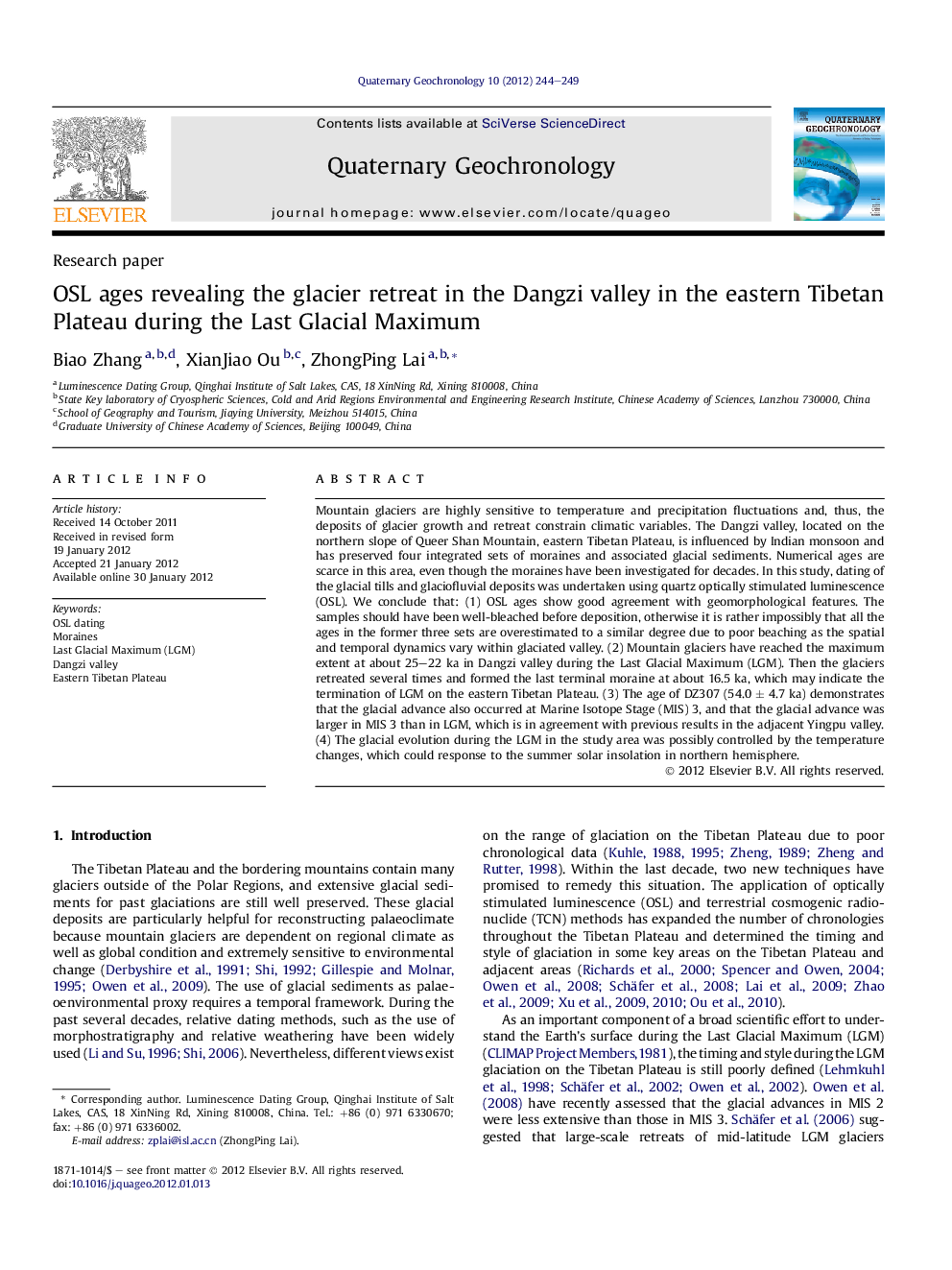| کد مقاله | کد نشریه | سال انتشار | مقاله انگلیسی | نسخه تمام متن |
|---|---|---|---|---|
| 4725129 | 1639866 | 2012 | 6 صفحه PDF | دانلود رایگان |

Mountain glaciers are highly sensitive to temperature and precipitation fluctuations and, thus, the deposits of glacier growth and retreat constrain climatic variables. The Dangzi valley, located on the northern slope of Queer Shan Mountain, eastern Tibetan Plateau, is influenced by Indian monsoon and has preserved four integrated sets of moraines and associated glacial sediments. Numerical ages are scarce in this area, even though the moraines have been investigated for decades. In this study, dating of the glacial tills and glaciofluvial deposits was undertaken using quartz optically stimulated luminescence (OSL). We conclude that: (1) OSL ages show good agreement with geomorphological features. The samples should have been well-bleached before deposition, otherwise it is rather impossibly that all the ages in the former three sets are overestimated to a similar degree due to poor beaching as the spatial and temporal dynamics vary within glaciated valley. (2) Mountain glaciers have reached the maximum extent at about 25–22 ka in Dangzi valley during the Last Glacial Maximum (LGM). Then the glaciers retreated several times and formed the last terminal moraine at about 16.5 ka, which may indicate the termination of LGM on the eastern Tibetan Plateau. (3) The age of DZ307 (54.0 ± 4.7 ka) demonstrates that the glacial advance also occurred at Marine Isotope Stage (MIS) 3, and that the glacial advance was larger in MIS 3 than in LGM, which is in agreement with previous results in the adjacent Yingpu valley. (4) The glacial evolution during the LGM in the study area was possibly controlled by the temperature changes, which could response to the summer solar insolation in northern hemisphere.
► OSL samples are well-reset, with ages in agreement with geomorphological features.
► Glaciers have reached the maximum extent at about 25-22 ka during the LGM.
► The last moraine formed at ∼16.5 ka, indicating the termination of LGM in the study area.
► The glacial advance was larger in MIS3 than in LGM.
► Glacial evolution during the LGM was possibly mainly controlled by temperature.
Journal: Quaternary Geochronology - Volume 10, July 2012, Pages 244–249